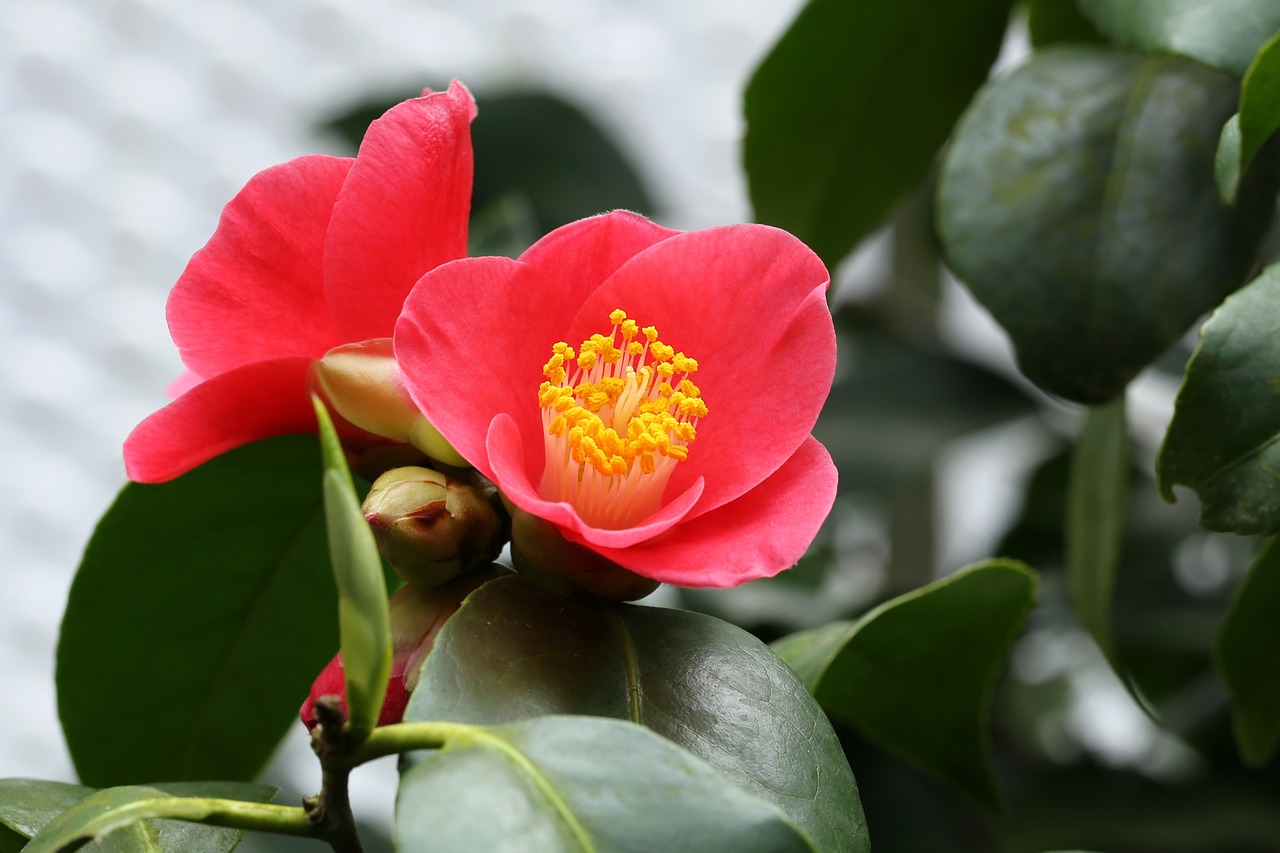
Camellias are flowers of great beauty, being the most beautiful that can be found. A reason it highly valued them and why many people decide to have them in their gardens because their flowers last a long time, blooming almost all year round. However, they are plants that require a series of specific care. There are several species within them. Although the most common in gardens is the so-called Camellia japonica.
How to care for camellia?

Camellia is native to the East Asia area, being very abundant in countries such as China or Japan, where it is highly valued not only for its aesthetics and beauty but also because its plant, which is actually a shrub is used for doctors.
In addition, within the camellias, we can find multiple species, although the most common and known are:
Camellia japonica: It is native to Japan and is recognized by its pink color, popularly also known as Rose of Japan.
Camellia sasanqua: It has smaller and darker leaves. Also, their flowers are smaller and tend to bloom in the fall.
Camellia Sinensis: It is used in traditional Chinese medicine or TCM.
Regardless of the species, the camellia is characterized by a striking shrub that grows up to four meters vertically and whose shape is elegant because it is oval or slightly pyramidal.
In addition, it stands out for its large flowers -as a rose more or less-, and that can be of different colors, the most common being white, pink, yellow or red.
Basic care
Camellias tend to be very long-lived plants, but due to this particularity, we should not overlook the care of the camellias, although we already told you that neither the flower nor the shrub is very demanding. In fact, although the flower seems fragile, they are more resistant plants than it seems.
Location, light, and temperature
Camellias live in outdoor areas, although it is important to place them in a place where they are protected from strong winds and, in addition, have plenty of natural light because they need it for their development, but always in shade or semi-shade. Regarding temperature, they endure climates with a minimum of 12 degrees Celsius.
Watering and humidity
Irrigation varies according to the season of the year. It is important to water them more often in summer, while in winter you should moderate the amount of water. However, always make sure that the soil is moist but well drained.
Substrate and fertilizer
The substrate or soil for these plants should always be acid soil. The fertilizer can be used during its growth stage and after flowering, having to use a specific one for camellias, so if you like to prepare your own products, it is important that before you look at the composition of a specific commercial one to adjust the best possible your formula of homemade fertilizer for camellias. Normally, they usually have a good percentage of earthworm humus, among other components.
Also, it is advisable to mulch or natural mulch once a year.
Months of flowering
The months of the flowering of the camellia are many because it is a plant that, practically, is in continuous flowering. However, in some species, these months coincide with spring, although their flowers usually last long, even living perfectly until winter. For example, Camellia sasanqua already begins to bloom in the autumn.
Pruning
The ideal time for flowering pruning is once the bloom is over or just when you have little left to finish. This type of pruning makes the next flowering more abundant. In winter, you can perform a cleaning pruning to remove old or diseased parts.
Transplant
The camellias have to be transplanted when the cold starts to appear and always keeping the ground ball so that they notice a little change of soil or soil of the pot.
Reproduction
The reproduction or multiplication of the camellias is by cuttings, as it happens in many other types of plants. The only precaution to keep in mind is that their roots are usually high.
Common pests and diseases
Several pests can affect camellias, noticing their existence by a greater fall of the leaves, as well as by their decayed appearance, yellowish color, or spots. Among the most common pests are insects such as mites, aphids or spider mites and fungi, especially if the roots are flooded.
If you like these flowers reminiscent of roses, we explain how to care for camellia so you know where it is best to locate them, the periodicity of irrigation and the main pests that may affect you, among other aspects. And, we also tell you its meaning because it is a mythical flower with a lot of meaning.
